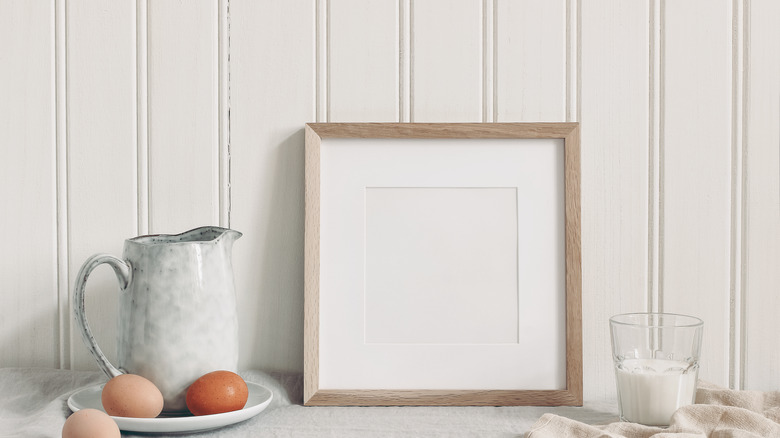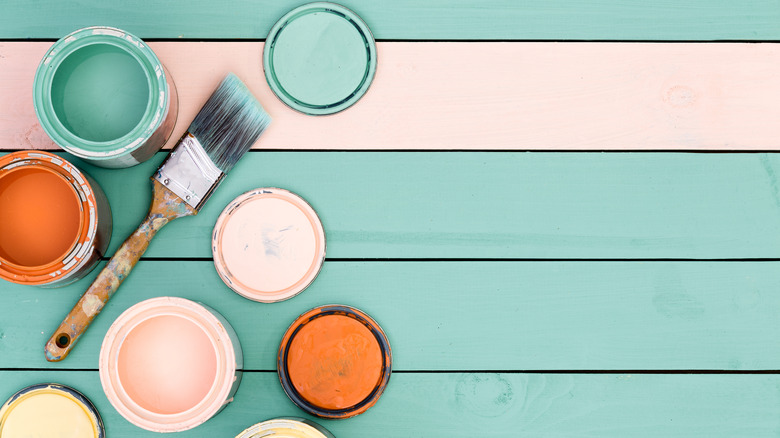The Genius Technique For Avoiding Drips When Painting Wall Paneling
Many people decide to tackle a DYI painting project at some point in their lives. Some of them even like it. What no one enjoys, however, is ending up with a messy paint job. This unfortunate event can happen when applying paint to surfaces that have grooves and gaps like wood paneling and shiplap. Yes, a mess of dried paint drips and pooled paint where you least want it is a home improvement faux pas that may leave you wishing you'd left the job to someone with a better skill set. Hard luck scenarios like this can actually be avoided quite easily, though, by following the advice of a painting pro.
When it comes to getting it just right, have you ever heard of the BRB method of painting? Learn how to employ the technique when painting paneling, and this is an instance where BRB won't end up meaning you'll be right back to redo your paint job.
Employing the BRB technique
What exactly are we talking about when it comes to the BRB technique? Painting pro Tila Lee of Pretty in Paint School, shared with Living Etc. that this is her go-to method for getting flawless painting results when working with surfaces like paneling and shiplap. It's really simple, too.
At its core, BRB stands for brush, roll, brush. This means after cleaning and/or prepping your walls, you'll first apply paint to corners, grooves, crevices, or gaps with a brush to get the paint down inside them. Then you'll use a paint roller to apply a coat of paint to the entire wall of paneling. Now, to the key point: Before the paint dries, you'll use your brush to smooth out any pools of paint or unsightly paint drips that frequently occur on irregular surfaces.
It's true that this method requires a little extra labor. But, using the BRB technique produces smooth, pro-level results that make it worth the time and effort to do the job right the first time. Keep in mind that this trick of the trade works well with chair rails and other types of molding, too.
Other tips for painting paneling
Before you paint paneling, you'll usually have to prep it. The first step is to fill in any holes with spackle using a putty knife. After that dries, you'll move on to sanding. This is especially important for wood surfaces with a shiny, varnished finish. If you don't sand, according to Home Depot, your paint won't adhere to the wall. You can use a sandpaper block or a power sander, but don't get too aggressive if the paneling is veneer instead of solid wood. You don't want to sand all the way down to the fiberboard.
After sanding, apply a primer as you would with other wall painting projects. The main difference with applying primer to paneling or shiplap is that you'll need your trusty brush to get down into those familiar grooves and crevices. The rest of the wall can be primed with a roller. Let primer dry for a full day before proceeding with your BRB painting technique for a beautifully updated wall.


